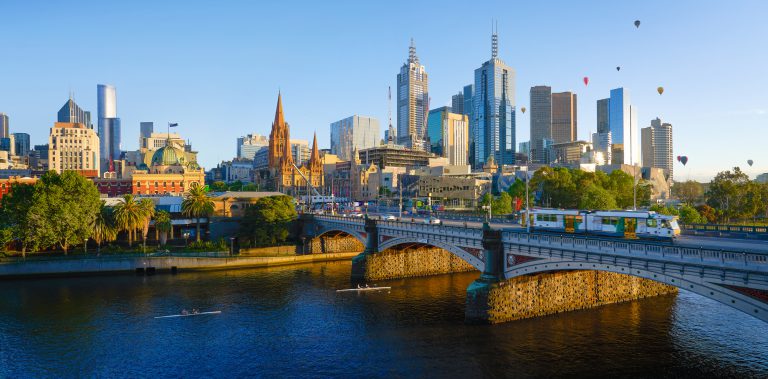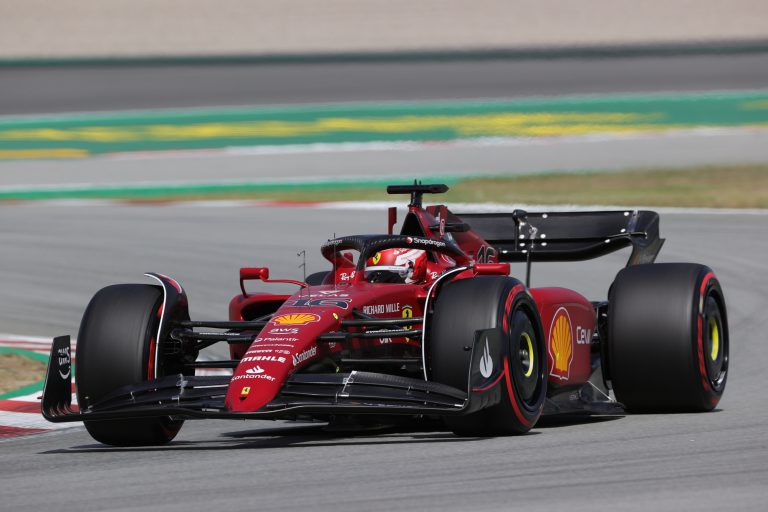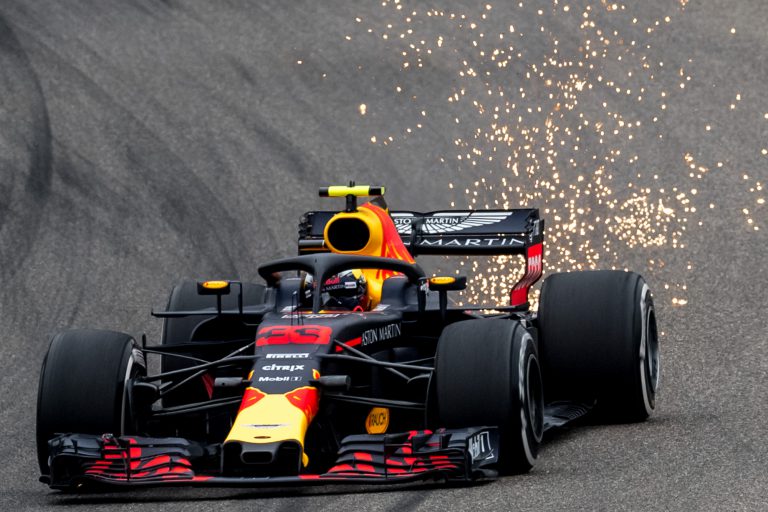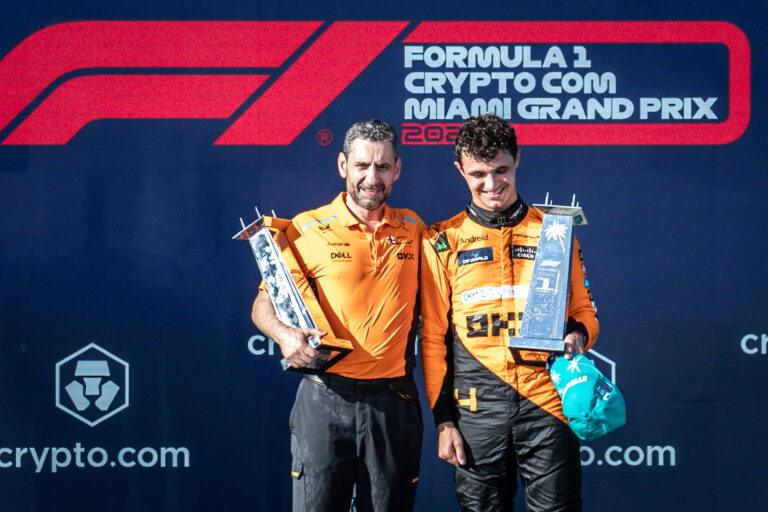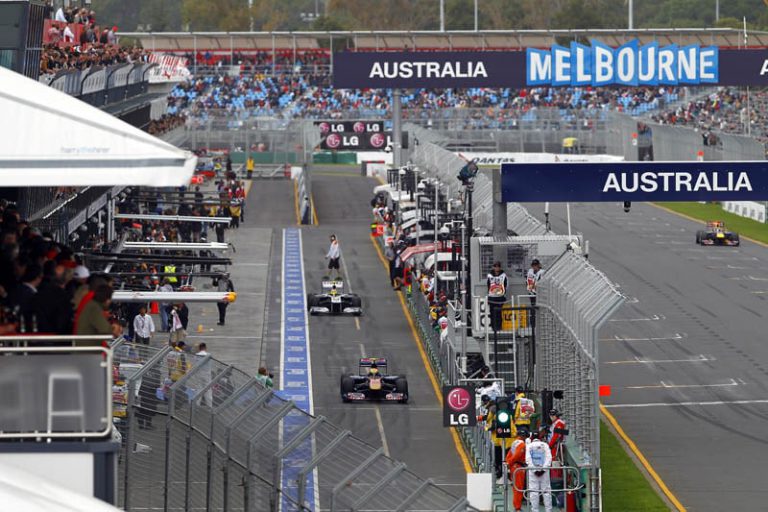History of the Australian Grand Prix in Formula 1
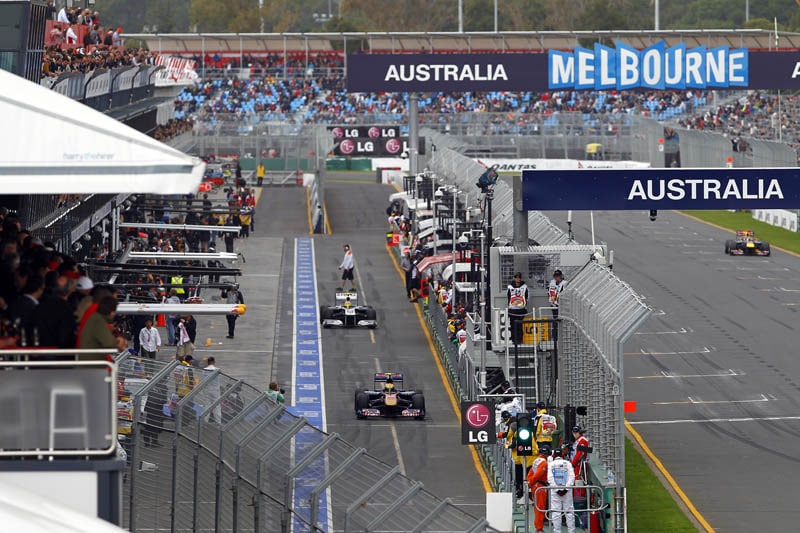
TABLE OF CONTENTS
In the land down under Formula 1 is just as popular as it is for its European counterparts. The Australian Grand Prix is one of the oldest races in history if you include the years the race took place before entering F1
Since the late twenties, fans in Australia have been watching quality races with F1-caliber drivers to entertain them up until today. The Australian Grand Prix joined the F1 Championship in 1985 and despite this year’s cancelation due to Covid-19, the Aussies will continue to host F1 until 2025 at the minimum. Here is the history of Australia’s Tracks and Formula 1.
BEFORE THE FORMULA 1 CHAMPIONSHIP
The vast majority of Australia’s Grand Prix races took place before officially joining F1 in 1985. This does not mean there haven’t been memorable moments in its history or a lack of quality drivers either. Australia would invite F1 drivers to race on their circuits who enjoyed visiting the country and tackling its challenging tracks during Europe’s winter months.
Before the Great War
Arthur Waite would be the first to claim Australia’s first Grand Prix win which took place in 1928. The race was held away from the big island but rather on Phillips Island off the southern coast of the country. European car manufacturer Bugatti would dominate the AGP on the Island for the next four races.
The Grand Prix returned to the mainland where races took place in Bathurst in 1938 where British Peter Whitehead claimed victory. Tragedy would follow in the following year at the Lobethal Circuit in South Australia when driver Vern Leech died instantly in a horrific crash.
THE LONG MARCH TO FORMULA 1
1950’s
The 1950s would prove to include many great moments at the Australian Grand Prix with major wins from future F1 heroes. Jack Brabham, who until today is the most successful driver from Australia with three F1 driving championships. Jack is also the only driver to win the title whilst driving a race car that bore his own name on it.
Britain’s Sterling Moss would dazzle over 120,000 fans in his Maserati in 1956 taking the chequered flag. Sterling would also have a great career in F1, winning sixteen races.
1960’s
During the 60s Australia would continue to attract top-tier talent to participate in its races. The land down under was ideal for racing during European winters, which meant drivers and teams can continue to hone their skills all year round.
Jack Brabham would continue to please his home crowd Fans winning the Grand Prix in 1963 and 1964. Bruce McLaren would have to battle Brabham for his win in 1965. Three F1 greats won in the next three races; Graham Hill and Jackie Stewart of British Motor Racing and Jim Clark driving for Lotus.
1970’s
Formula 5000 would take control of the Australian Grand Prix and the race was hosted at Warwick Farm. Australians and New Zealanders were the origins of the vast majority of drivers participating until the late seventies when Europeans slowly returned to the series to take part in the series and races.
1980’s
Formula 5000 would prove to be an unsuccessful venture and the Australian Grand Prix was under threat if not for Alan Jones, son of the great Aussie Stan Jones, who decided to host the race at Calder Park.
Alan Jones, who was the current F1 World Drivers Champion, decided to include F1 cars, Formula 5000 cars, and Formula Atlantic Cars in the race. Jones’ popularity would grow even more with a victory at Calder Park. By the mid-eighties, the Australian Grand Prix was looking for a new racetrack to call home and Formula 1 would provide the best option.
FORMULA 1 OFFICIALLY BEGINS IN 1985
The Australian Grand Prix officially joined the Formula 1 Championship in 1985, hosting the last race of the F1 season in Adelaide. The Adelaide Street Circuit, which ran for 3.780km with sixteen turns, was deemed a tricky track that challenged drivers and pleased fans.
The inaugural race would not play a deciding factor for the Championship but did provide excitement as Keke Rosberg driving for Williams-Honda won the race after battling Lotus-Renaults Ayrton Senna in sweltering heat for most of the race. Aussies and fans from around the world in the grandstands would also be the lucky ones witnessing Niki Lauda’s last race in Formula 1.
THREE-WAY BATTLE
Australians and fans worldwide would have their eyes glued to the racetrack as the Drivers’ Championship would be disputed in the final race of 1986. Nigel Mansel, Nelson Piquet, and Alain Prost would all be vying for the top prize with very few points separating them. Mansel would suffer a mechanical failure and exit the race along with his championship hopes, Nelson Piquet was forced to pit which opened the door for McLaren and Prost to snag the much-needed victory to claim F1’s most important trophy.
SENNA AND PROST
In 1988 McLaren, who happened to have the two of the best drivers in the world, would cap off an unprecedented season in Australia with Prost taking the race and Senna finishing in second. The finish confirmed Senna as World Champion. Between both drivers, they would win fifteen out of the sixteen races and claim sixteen pole positions to boot.
The drama between Prost and Senna would continue the following year when Adelaide was under heavy rain. Prost refused to race, and Senna proceeded to show the racing world what a legend he was. Senna simply went flat out and completely dominated the track despite the dangerous conditions, unfortunately, late in the race with over a twenty-second lead ran into a backmarker ending his glorious race. This crash would prove to be costly to the Brazilian as it cost valuable points which in turn would have given him a chance of taking the Drivers’ Championship away from Prost.
1990’s
PROST AND SENNA, LOVE AND HATE
The Australian Grand Prix hosted Formula 1’s 500th race which included many racing greats to assist in the trophy presentation at the end of the race. Juan Manuel Fangio, Jack Brabham, Jackie Stewart, and Niki Lauda were all in attendance for that momentous race.
Senna and Prost continued their feud that boiled over in Suzaka during the previous race where Senna clinched the championship in a controversial fashion. Senna led most of the Australian Grand Prix but bowed out due to gearbox issues which allowed fans to witness an incredible battle for first.
Nigel Mansel and Nelson Piquet delighted fans with the two dueling for victory. It was a game of cat and mouse as Mansel, who was in second, did all he could to catch Piquet only to fall short and nearly collided on a last-ditch attempt by Mansel to pass Piquet on the last lap of the race.
Senna continued his success in Australia with another win even if it was after only fourteen completed laps due to torrential rainfall. This victory helped McLaren clinch its fourth straight Constructors Title in a row. Australia would also be the last race for Brazilian three-time World Champion Nelson Piquet in F1.
It would feel like the Australian Grand Prix and Senna were synonymous because in 1993 he won his last race with McLaren before leaving the team to join Williams. Amazingly, Senna and Prost appeared to put bad blood aside and hugged on the podium. Prost, who finished second, announced his retirement in the following months.
SCHUMACHER AND HILL
Once again, the Drivers’ Championship would be on the line and for the first time, it would not involve Alain Prost and Ayrton Senna. Sadly, Senna died during the San Marino Grand Prix, otherwise, he most certainly would have at the least been in the race. William’s Damon Hill and Benetton’s Michael Schumacher were neck and neck in the championship separated by a meager point. It doesn’t get much closer than that, putting tremendous pressure on both drivers not to make a single mistake.
It would seem the pressure got Schumacher who made costly errors allowing Hill to not only catch up with him but also make an attempt to pass him. This pass on Schumacher would cause debates up until today and probably always will raise questions if Michael intentionally tried to bump Hill out of the race. Both drivers would be put out of the race and the standings would not change with Schumacher claiming his first Drivers championship.
Nigel Mansel won the race and surpassed Australia’s own Jack Brabham as the oldest winner of the Grand Prix at the age of 41 years old.
Damon Hill driving for Williams would get his revenge for winning the last F1 race to be held in Adelaide. Hill would go on to win the 1996 and 1997 world Championships where he continued his battles with Schumacher within those seasons.
FORMULA PACKS THEIR BAGS AND HEADS TO MELBOURNE
In 1996 Formula 1 moved the race from the Adelaide Street Circuit to the Albert Park Circuit in Melbourne. Albert Park was another sixteen-turn circuit that ran along 5.3km of track. Contrary to Adelaide being the last race on the schedule, Melbourne would become the season opener for years to come. Over four hundred thousand fans would attend the races on the first weekend eager to watch a fast circuit that mirrored Circuit Gilles Villeneuve in Canada.
A NEW ERA BEGINS
Melbourne’s home opener started off with a bang when Martin Brundle had an insane crash that had him airborne at one point and despite the incident, he managed to return to the pits and drive his spare car for the rest of the race. Damon Hill won his second Australian Grand Prix while his teammate Jacque Villeneuve finished in second and Ferrari’s Eddie Irvine followed in third.
MCLAREN’S REBIRTH
McLaren suffered in Formula 1 after the departure of Ayrton Senna and Alan Prost going fifty races without a win. David Coulthard would end the stagnation in 1997 opening the season with a win. In 1998 McLaren would repeat victory this time with Mika Hakkinen taking the season opener on top of the podium.
This win did raise questions about the competition because Coulthard, who led the rest, moved aside for Mika to take the win based on a pre-race agreement. It was felt this action was not a reflection of the true spirit of the sport.
2000’s
SCHUMACHER TAKES THE SCUDERIA TO NEW HEIGHTS
In 1999 Ferrari would kickoff their dominance on the track when Eddie Irvine won the race taking advantage of Schumacher, Coulthard, and Hakinnen’s early exits from the race. Schumacher, like on many other tracks during the early years of this decade, began his dominance with a string of victories. He claimed the 2000 race handily and shared the podium with Ferrari teammate Ruben Barrichello in second place.
Schumacher continued his winning ways in 2001, dominating the field once again. The race is sadly remembered for the death of Graham Beveridge who was a volunteer marshal at the time. A crash between brother Ralf Schumacher and Jacque Villeneuve sent one of the race cars into a fence, sending a wayward tire into the marshal.
Why have two wins when you can have three? Schumacher yet again won in Melbourne but despite this amazing feat the home fans were far more interested in fellow Aussie Mark Webber’s performance. Webber, driving for the fledgling team of Minardi, managed to have the race of a lifetime for himself, his team, and his adoring fans finishing in 5th place.
SCHUMACHER’S STREAK ENDS
In 2003 Schumacher’s reign at the track would come at the hands of constant rival McLaren’s David Coulthard. Coulthard nabbed his second Australian Grand Prix victory with Juan Pablo Montoya in second and a young Kimi Raikkonen in third.
SCHUMACHER OWNS ALBERT PARK
It didn’t take long for Michael Schumacher and Ferrari to take back Australia in 2004’s race wherein he smashed the record for the fastest lap at Albert Park, the record still stands today. Barrichello finished in second place with Ferrari and up and comer Fernando Alonso in third. Italy continued to enjoy its time in Australia when Giancarlo Fisichella won the 2005 race due to wet conditions and driving an impressive race.
THE YOUNGSTERS TAKE OVER
The remainder of races in the decade would see multiple different drivers win in Australia. Spain’s Fernando Alonso driving for Renault took his maiden Australian win in 2006. In 2007 Kimi Raikkonen would match the Spaniard winning for the first time down south in his Ferrari.
In 2008 Britain’s Lewis Hamilton became the first driver to begin his F1 career with a victory. Jenson Button, driving for Brawn, won the second race of his career in 2009 which would lead to a string of victories that eventually would crown him Drivers Champion for the year.
2010’s
BUTTON SHINES
Jenson revisited the top of the podium at the top of the decade in 2010, beating out Robert Kubica and Felipe Massa who finished second and third. In 2011 Germany’s Sebastien Vettel took his first Australian title sharing the podium with Lewis Hamilton in second and for the first time ever a Russian made the podium in third; Vitaly Petrov driving for Lotus. In 2012 Jenson would join elite status for being one of the few drivers to have won three Australian Grand Prix under their belt.
KIMI SHOCKS, MERCEDES GROWS
Kimi took a huge chance leaving Ferrari and Formula 1 in 2009 and would make his return to the series when he joined Lotus in 2013. The Iceman shocked the racing world by taking an unexpected victory with a non-contending car at Albert Park, this would be his only win of the season.
Mercedes would make leaps and bounds in the standings with the help of two future world driving champions, Nico Rosberg and Lewis Hamilton. Nico Rosberg won two Australian Grand Prix, one in 2014 and 2016. His teammate Lewis won the 2015 Grand Prix and has finished in the top 3 of every Australian race until 2019.
Sebastien Vettel with his Ferrari beat out the ever-dangerous Mercedes of Hamilton and Bottas in 2017 and 2018 making Australia one of Sebastian’s most successful races with three wins. Finland’s Valtteri Bottas brought Mercedes back to the top of the Podium in 2019.
2020’S
COVID 19 PUTS AUSTRALIA ON HOLD
The 2020 and 2021 Grand Prix were both canceled due to the worldwide pandemic due to the virus Covid -19. Formula 1 will return to Albert Park in 2022 barring any setbacks or health mandates preventing the race from happening. The Australian Grand Prix is under contract with Formula 1 until 2025.



